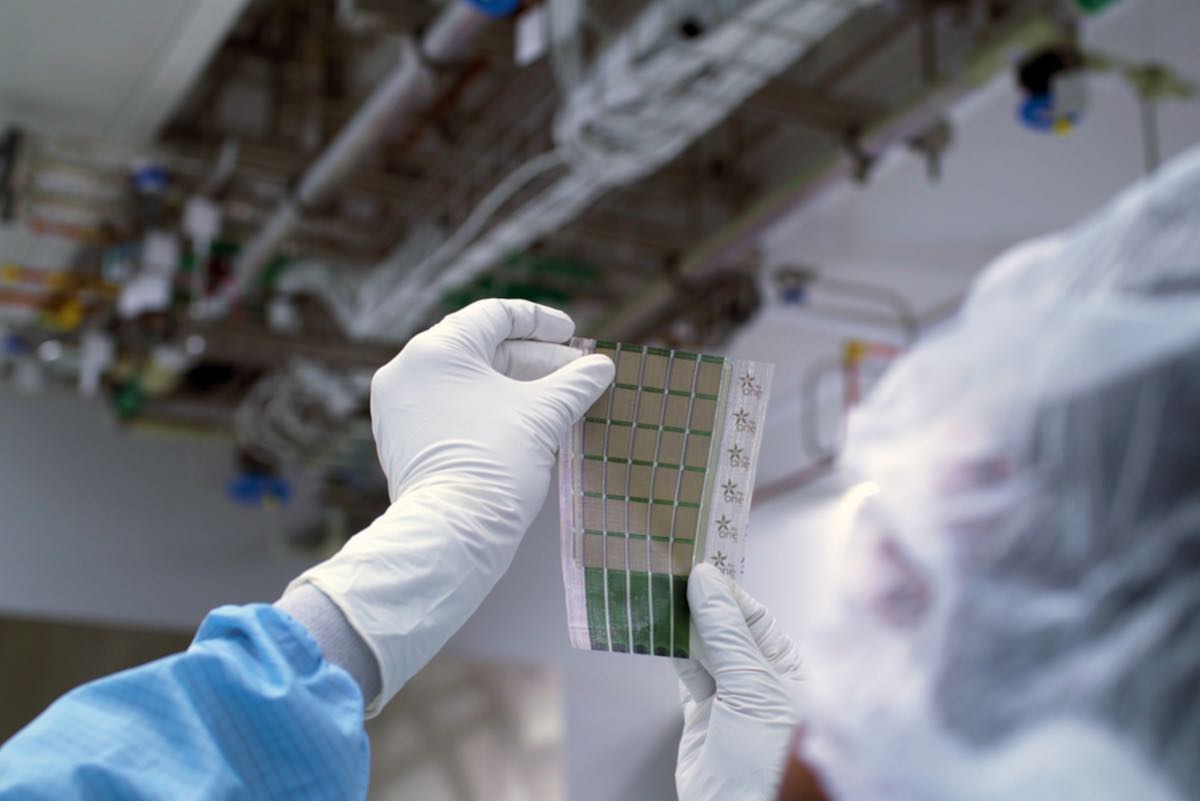Researchers at the Massachusetts Institute of Technology (MIT) have developed a scalable fabrication technique that allows for the production of paper-thin and lightweight solar cells that can be applied to any surface.
Billed by the MIT researchers as being “much thinner than a human hair”, the durable and flexible solar cells are made from semiconducting inks using printing processes that will, one day, be able to be scaled to large-area manufacturing.
The solar cells are one-hundredth the weight of conventional solar panels but able to generate 18-times more power-per-kilogram, and can be glued to most surfaces. As such, MIT claims that the solar cells could be used for everything from wearables through to deployment in disaster emergencies.
Other applications suggested by MIT for their new solar cells include integration into the sails of a boat to provide power while at sea, on tents and tarps for disaster recovery operations, or on the wings of drones to extend their flight range.
Unlike previous iterations, which have required expensive and technologically challenging production methods, the new solar cells developed by MIT are entirely printable, thanks to ink-based materials and scalable fabrication techniques.
The MIT researchers use nanomaterials in the form of a printable electronic ink to create the solar cells. The initial process, however, results in fragile solar modules, but the MIT team print the cells onto a fabric known as “Dyneema” so as to provide the resilience and flexibility necessary for the solar cells.
The resulting solar module is capable of generating 730W of power per kilogram when freestanding, and around 370W/kg when deployed on Dyneema fabric. For comparison’s sake, this is around 18 times more power-per-kilogram than conventional solar cells.
“A typical rooftop solar installation in Massachusetts is about 8,000 watts,” said Mayuran Saravanapavanantham, an electrical engineering and computer science graduate student at MIT.
“To generate that same amount of power, our fabric photovoltaics would only add about 20 kilograms (44 pounds) to the roof of a house.”
Even after rolling and unrolling a fabric solar panel more than 500 times, the MIT researchers found that the solar cells still retained more than 90% of their initial power generation capabilities.
So as to ensure the lightweight and ultra-thin design of the solar cells, the MIT team are now working on an ultrathin packaging solution that will protect the cells from the elements.
“We are working to remove as much of the non-solar-active material as possible while still retaining the form factor and performance of these ultralight and flexible solar structures,” said Jeremiah Mwaura, a research scientist in the MIT Research Laboratory of Electronics.
“For example, we know the manufacturing process can be further streamlined by printing the releasable substrates, equivalent to the process we use to fabricate the other layers in our device. This would accelerate the translation of this technology to the market.”










